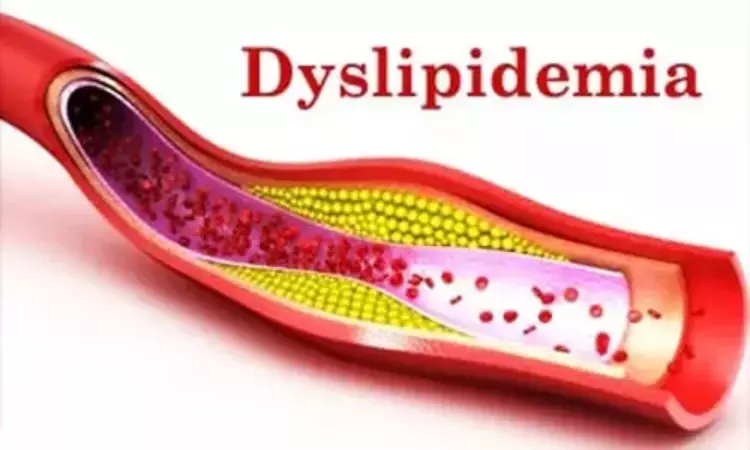- Home
- Medical news & Guidelines
- Anesthesiology
- Cardiology and CTVS
- Critical Care
- Dentistry
- Dermatology
- Diabetes and Endocrinology
- ENT
- Gastroenterology
- Medicine
- Nephrology
- Neurology
- Obstretics-Gynaecology
- Oncology
- Ophthalmology
- Orthopaedics
- Pediatrics-Neonatology
- Psychiatry
- Pulmonology
- Radiology
- Surgery
- Urology
- Laboratory Medicine
- Diet
- Nursing
- Paramedical
- Physiotherapy
- Health news
- Fact Check
- Bone Health Fact Check
- Brain Health Fact Check
- Cancer Related Fact Check
- Child Care Fact Check
- Dental and oral health fact check
- Diabetes and metabolic health fact check
- Diet and Nutrition Fact Check
- Eye and ENT Care Fact Check
- Fitness fact check
- Gut health fact check
- Heart health fact check
- Kidney health fact check
- Medical education fact check
- Men's health fact check
- Respiratory fact check
- Skin and hair care fact check
- Vaccine and Immunization fact check
- Women's health fact check
- AYUSH
- State News
- Andaman and Nicobar Islands
- Andhra Pradesh
- Arunachal Pradesh
- Assam
- Bihar
- Chandigarh
- Chattisgarh
- Dadra and Nagar Haveli
- Daman and Diu
- Delhi
- Goa
- Gujarat
- Haryana
- Himachal Pradesh
- Jammu & Kashmir
- Jharkhand
- Karnataka
- Kerala
- Ladakh
- Lakshadweep
- Madhya Pradesh
- Maharashtra
- Manipur
- Meghalaya
- Mizoram
- Nagaland
- Odisha
- Puducherry
- Punjab
- Rajasthan
- Sikkim
- Tamil Nadu
- Telangana
- Tripura
- Uttar Pradesh
- Uttrakhand
- West Bengal
- Medical Education
- Industry
Recent trends in epidemiology of dyslipidemias in India: Key takeaways

India: A recent study published in the Indian Heart Journal has shed light on the trends in the epidemiology of dyslipidemias in India.
Dyslipidemia is the most important risk factor for coronary artery disease (CAD). High total cholesterol and its principal subtypes: low-density lipoprotein (LDL) cholesterol and non-high-density lipoprotein (NHDL) cholesterol are the most important. The article does not cover the epidemiology of lipoprotein(a), an emerging risk factor.
Epidemiological and Mendelian randomization studies have confirmed the role of raised triglycerides and lipoprotein(a). Prospective Urban Rural Epidemiology (PURE) study identified raised NHDL cholesterol as the most important risk factor. Regional and multisite epidemiological studies in India have reported increasing population levels of total-, LDL-, and NHDL cholesterol and triglycerides. INTERHEART study showed a significant association of raised ApoB/ApoA1, total-, LDL-, and NHDL-cholesterol in South Asians.
India Heart Watch reported a higher prevalence of total and LDL cholesterol in northern and western Indian cities. ICMR-INDIAB study reported regional variations in hypercholesterolemia (≥200 mg/dl) from 4.6 % to 50.3 %, with greater prevalence in northern states, Kerala, Goa, and West Bengal.
Non-Communicable Disease Risk Factor Collaboration and Global Burden of Diseases Studies have reported increasing LDL- and NHDL-cholesterol in India. Studies among emigrant Indians in the UK and USA have reported higher triglycerides compared to Caucasians.
The key takeaways from the study are as follows:
- Dyslipidemia prevalence varies with age, gender, residence region, and socioeconomic status. There are geographic variations in the prevalence of various dyslipidemias in India. India Heart Watch study in 11 cities across India reported variable prevalence of various dyslipidaemias in different geographic regions.
- While the prevalence of raised total and LDL-C was higher in northern and western Indian cities that of raised triglycerides was higher in eastern and southern states. Cities with better human development index had higher total and LDL-C, while those with lower development index had more hypertriglyceridemia.
- Significant state-level variation in various dyslipidemias has been reported by the ICMR-INDIAB study. This study shows that the highest prevalence of raised total and LDL cholesterol is in more developed states of the country (Kerala, Goa, Delhi, etc.) while hypertriglyceridemia and low HDL are widely prevalent.
- Dietary factors could be important but need more studies.
- Adherence to well-structured population-based and individual-level interventions to reduce dyslipidemia, as suggested by the World Heart Federation, shall result in a decrease in cardiovascular mortality and morbidity in our country.
"Identification of regional variations and trends in dyslipidemias needs more nationwide surveys," the researchers wrote. "Prospective studies are needed to assess the quantum of risk with the incidence of coronary artery disease."
Reference:
Sharma, S., Gaur, K., & Gupta, R. (2024). Trends in epidemiology of dyslipidemias in India. Indian Heart Journal.. https://doi.org/10.1016/j.ihj.2023.11.266
Dr Kamal Kant Kohli-MBBS, DTCD- a chest specialist with more than 30 years of practice and a flair for writing clinical articles, Dr Kamal Kant Kohli joined Medical Dialogues as a Chief Editor of Medical News. Besides writing articles, as an editor, he proofreads and verifies all the medical content published on Medical Dialogues including those coming from journals, studies,medical conferences,guidelines etc. Email: drkohli@medicaldialogues.in. Contact no. 011-43720751


